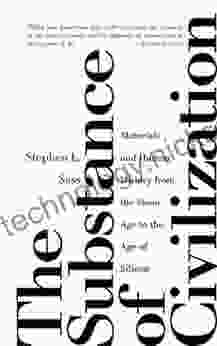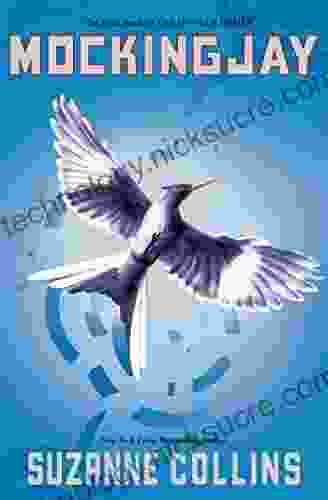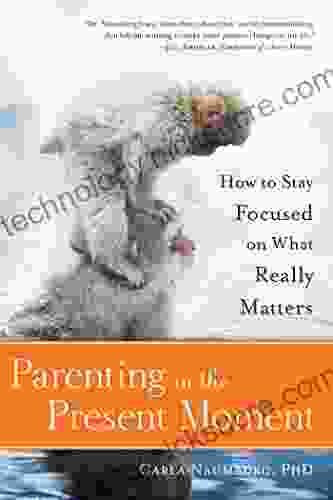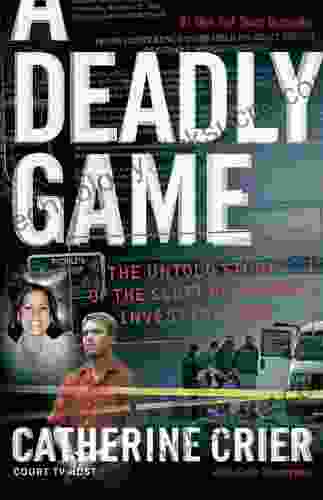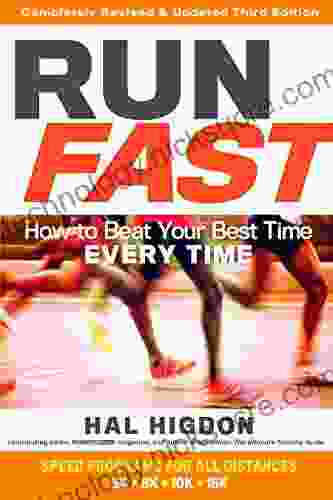The Substance of Civilization: Uncovering the Material Foundations of Human Progress

Civilization, in its myriad forms, is a testament to the ingenuity and perseverance of humankind. Throughout history, humans have harnessed the power of materials to shape their environments, create tools and technologies, and develop complex social and cultural systems. The substance of civilization, therefore, is not merely the physical objects that surround us but the intricate interplay between materials and human societies.
4.2 out of 5
| Language | : | English |
| File size | : | 1564 KB |
| Text-to-Speech | : | Enabled |
| Enhanced typesetting | : | Enabled |
| Word Wise | : | Enabled |
| Print length | : | 332 pages |
| Screen Reader | : | Supported |
The Stone Age: The Dawn of Material Culture
The earliest evidence of human material culture dates back to the Stone Age, where our ancestors fashioned tools and weapons from stone, bone, and wood. These simple tools enabled humans to adapt to their environment, hunt for food, and protect themselves from predators. As stoneworking techniques advanced, humans began to create more specialized tools, such as arrowheads, axes, and grinding stones, which further enhanced their survival and productivity.
The development of stone tools was not merely a technological advancement but also a social and cultural phenomenon. Stone tools became embedded in human social structures, serving as symbols of status, power, and craftsmanship. The act of creating and using stone tools fostered cooperation and knowledge exchange within communities, laying the groundwork for future social and economic development.
The Bronze and Iron Ages: Metalworking and the Rise of Civilization
The discovery of metalworking techniques ushered in a new era of material culture. The Bronze Age, which began around 3000 BCE, saw the emergence of metal tools and weapons made from copper and tin. Bronze was stronger and more durable than stone, enabling humans to create more efficient tools and weaponry. This technological advancement led to significant changes in warfare, agriculture, and trade, laying the foundation for the development of early civilizations.
The Iron Age, which began around 1200 BCE, further revolutionized material culture. Iron was even stronger and more versatile than bronze, allowing for the creation of more advanced tools, weapons, and armor. Ironworking became central to the rise of large-scale empires, such as the Roman Empire, which used iron weapons and tools to conquer and control vast territories.
The Middle Ages: Craftsmanship and the Guild System
During the Middle Ages, European civilization witnessed a resurgence of craftsmanship and the rise of the guild system. Guilds were associations of skilled artisans who shared knowledge, set standards, and regulated their trade. This led to a proliferation of specialized crafts, from blacksmithing to woodworking to textile production. The high level of craftsmanship during this period is evident in the magnificent cathedrals, castles, and works of art produced by medieval artisans.
The guild system also had a profound impact on the social and economic organization of medieval society. Guilds provided their members with training, protection, and a sense of community. They also played a role in shaping urban life, with different guilds controlling specific districts and occupations within cities.
The Renaissance and Scientific Revolution: Materialism and the New World
The Renaissance and Scientific Revolution of the 15th and 16th centuries marked a significant turning point in the history of material culture. This period witnessed a renewed interest in classical learning, which emphasized the importance of observation, experimentation, and rational thought. This led to breakthroughs in science, such as the development of the printing press, the telescope, and the microscope.
The Scientific Revolution also had a profound impact on material culture. The rise of scientific inquiry led to the discovery of new materials, such as gunpowder, and the development of new technologies, such as the steam engine. These advancements transformed warfare, transportation, and industry, laying the foundation for the Industrial Revolution.
The European exploration of the New World also had a significant impact on material culture. European explorers brought back new materials, such as rubber, tobacco, and maize, which were quickly incorporated into European economies and cultures. The exchange of goods and ideas between the Old World and the New World led to a period of unprecedented cultural and economic growth.
The Industrial Revolution: Mass Production and the Modern Era
The Industrial Revolution of the 18th and 19th centuries witnessed a fundamental shift in material culture. The development of new technologies, such as the steam engine, the cotton gin, and the power loom, led to the mass production of goods. This resulted in a dramatic decline in the price of manufactured goods and a massive increase in the availability of material possessions.
The Industrial Revolution also transformed the social and economic landscape of societies. The rise of factories and the factory system led to the concentration of workers in urban centers and the emergence of a new working class. The mass production of goods also created new markets and consumer cultures, which continue to shape our lives today.
The 20th Century: Plastics, Electronics, and the Information Age
The 20th century witnessed a continued explosion of new materials and technologies. The development of plastics, electronics, and computers has had a profound impact on every aspect of our lives, from the way we communicate to the way we work and play.
Plastics have become ubiquitous in our modern world, used in everything from packaging to construction to consumer products. Electronics, from smartphones to computers, have revolutionized the way we access and share information, connect with others, and entertain ourselves. The development of the internet has given rise to the Information Age, where information and communication have become central to our economies and societies.
The substance of civilization is a complex and ever-evolving story that spans millennia. From the simple stone tools of our ancestors to the sophisticated materials and technologies of the modern era, materials have played a central role in shaping human societies and cultural development. The substance of civilization is not merely a collection of objects but a reflection of human ingenuity, creativity, and the relentless pursuit of progress.
As we continue to advance into the future, it is essential to recognize the importance
4.2 out of 5
| Language | : | English |
| File size | : | 1564 KB |
| Text-to-Speech | : | Enabled |
| Enhanced typesetting | : | Enabled |
| Word Wise | : | Enabled |
| Print length | : | 332 pages |
| Screen Reader | : | Supported |
Do you want to contribute by writing guest posts on this blog?
Please contact us and send us a resume of previous articles that you have written.
 Fiction
Fiction Non Fiction
Non Fiction Romance
Romance Mystery
Mystery Thriller
Thriller SciFi
SciFi Fantasy
Fantasy Horror
Horror Biography
Biography Selfhelp
Selfhelp Business
Business History
History Classics
Classics Poetry
Poetry Childrens
Childrens Young Adult
Young Adult Educational
Educational Cooking
Cooking Travel
Travel Lifestyle
Lifestyle Spirituality
Spirituality Health
Health Fitness
Fitness Technology
Technology Science
Science Arts
Arts Crafts
Crafts DIY
DIY Gardening
Gardening Petcare
Petcare Stephen Wilbers
Stephen Wilbers Jenna Gottlieb
Jenna Gottlieb Kent David Kelly
Kent David Kelly Nate Silver
Nate Silver Linda White
Linda White Tetsu Kariya
Tetsu Kariya Alex Polyakov
Alex Polyakov Jennet Conant
Jennet Conant Celia Hodent
Celia Hodent Laura Eckert
Laura Eckert Chris Englert
Chris Englert Diana L Paxson
Diana L Paxson Jim Davidson
Jim Davidson Eric Enge
Eric Enge Eli Burakian
Eli Burakian David N Schwartz
David N Schwartz Vimla L Patel
Vimla L Patel Kevin Gallagher
Kevin Gallagher Teresa Denton
Teresa Denton Larry Pardey
Larry Pardey Nancy Marie Brown
Nancy Marie Brown Anne Bogel
Anne Bogel Saunders Mac Lane
Saunders Mac Lane Patrick Taylor
Patrick Taylor Alejandro Portes
Alejandro Portes Paul Sating
Paul Sating W C Mcrae
W C Mcrae Tony Roig
Tony Roig Fataniss Store
Fataniss Store Alex Johnson
Alex Johnson Robert Penn
Robert Penn Kevin Bales
Kevin Bales Hannah Arendt
Hannah Arendt Douglas D Scott
Douglas D Scott Marilynn Hughes
Marilynn Hughes Alexander Ferrauti
Alexander Ferrauti Alex Banks
Alex Banks Travis Eliot
Travis Eliot J Richard Hackman
J Richard Hackman Georgiann Davis
Georgiann Davis Steve Flink
Steve Flink Sarah Lynne Bowman
Sarah Lynne Bowman John Stage
John Stage Chukwuma Eleodimuo
Chukwuma Eleodimuo Derek Lundy
Derek Lundy Ron Mckeefery
Ron Mckeefery Lonely Planet
Lonely Planet Deborah L Davis
Deborah L Davis Idan Ravin
Idan Ravin C J Brown
C J Brown Scott L Smith
Scott L Smith Vasti Torres
Vasti Torres Celeste Headlee
Celeste Headlee Sally Huss
Sally Huss Moh Kolli Carnet
Moh Kolli Carnet Alda Sigmundsdottir
Alda Sigmundsdottir Philip Ball
Philip Ball Albert Marrin
Albert Marrin Carla Naumburg
Carla Naumburg Aaron Reynolds
Aaron Reynolds Greg Michaelson
Greg Michaelson Michael Steven
Michael Steven Catherine Dawson
Catherine Dawson Hadley Wickham
Hadley Wickham Michael Clary
Michael Clary Suzanna Mcgee
Suzanna Mcgee Ellen Snortland
Ellen Snortland Josh Bryant
Josh Bryant Geza Vermes
Geza Vermes Scott Turansky
Scott Turansky Alessio Mangoni
Alessio Mangoni John Boyette
John Boyette Danielle Tumminio Hansen
Danielle Tumminio Hansen Barbara Ehrenreich
Barbara Ehrenreich Chella Man
Chella Man John Kretschmer
John Kretschmer Elon Vidal
Elon Vidal Ashton Cartwright
Ashton Cartwright Robert L Wolke
Robert L Wolke Winona Guo
Winona Guo Kristin Gambaccini
Kristin Gambaccini Thomas Huhti
Thomas Huhti Pekka Louhiala
Pekka Louhiala S Kelley Harrell
S Kelley Harrell Alan Lightman
Alan Lightman Lynn Alley
Lynn Alley Jon Krakauer
Jon Krakauer Jeana Jorgensen
Jeana Jorgensen Stephen K Hayes
Stephen K Hayes Janja Lalich
Janja Lalich Andrew Zerling
Andrew Zerling Alexander L Co
Alexander L Co Ari Mennander
Ari Mennander Yannis Detorakis
Yannis Detorakis Alex Bellos
Alex Bellos Douglas Doman
Douglas Doman Game Spark
Game Spark Alessandro Valerani
Alessandro Valerani Alex Wolf
Alex Wolf Chanice Lee
Chanice Lee Evan F Moore
Evan F Moore Garth Nix
Garth Nix Laura Pavlov
Laura Pavlov Will Hart
Will Hart Austin Murphy
Austin Murphy Aleister Crowley
Aleister Crowley Cary Nemeroff
Cary Nemeroff Mark Golds
Mark Golds Matthew Johnson
Matthew Johnson Peter Galison
Peter Galison Michele Filgate
Michele Filgate Stanley Cohen
Stanley Cohen Dan Jacob
Dan Jacob Glenn Rivers
Glenn Rivers Diana Hopkins
Diana Hopkins Don Pitcher
Don Pitcher Jeff Galloway
Jeff Galloway Stephon Alexander
Stephon Alexander Megan Carle
Megan Carle Ken Schultz
Ken Schultz Theodore X O Connell
Theodore X O Connell Jennifer Boyle
Jennifer Boyle Julian B Barbour
Julian B Barbour Aleksandr Anufriyev
Aleksandr Anufriyev Kingsley Amis
Kingsley Amis Ruth Minsky Sender
Ruth Minsky Sender Jacob Sannox
Jacob Sannox John Thorne
John Thorne Victoria Wilson
Victoria Wilson Margaret Rooke
Margaret Rooke Michael Digiacomo
Michael Digiacomo Terry Marsh
Terry Marsh River
River Robert W Winters
Robert W Winters Martha Sears
Martha Sears Phil Jarratt
Phil Jarratt Alicia Ranoldo
Alicia Ranoldo Phil Keith
Phil Keith Darl Kuhn
Darl Kuhn Scott Fratcher
Scott Fratcher Peter Maguire
Peter Maguire Stormie Omartian
Stormie Omartian F T Lukens
F T Lukens Simon Monk
Simon Monk Raj Kumar
Raj Kumar Katherine Leigh
Katherine Leigh Jennifer Cohen Harper
Jennifer Cohen Harper James Johonnot
James Johonnot David Borgenicht
David Borgenicht Gail M Nelson
Gail M Nelson Dr Rebecca Harwin
Dr Rebecca Harwin Michele Gelfand
Michele Gelfand G Blake Meike
G Blake Meike Gf Denehy
Gf Denehy Leonhard Euler
Leonhard Euler Duncan Wells
Duncan Wells Albert Hofmann
Albert Hofmann Kortney Keisel
Kortney Keisel Dan Purser Md
Dan Purser Md Jon B Gould
Jon B Gould J C Herz
J C Herz Peter Ross
Peter Ross Earl Swift
Earl Swift Hannah V Holmes
Hannah V Holmes David N Myers
David N Myers Todd Denault
Todd Denault Jim Hynes
Jim Hynes Jason R Rich
Jason R Rich Sarah Stewart Johnson
Sarah Stewart Johnson C C Hunter
C C Hunter Walter Gretzky
Walter Gretzky Phyllis Good
Phyllis Good Pedro Domingos
Pedro Domingos Katie Edwards
Katie Edwards Alex Bezzerides
Alex Bezzerides Patrick F Mcmanus
Patrick F Mcmanus Sarah Ockwell Smith
Sarah Ockwell Smith Cosmic Kids Publications
Cosmic Kids Publications Mary Lynne Fernandez
Mary Lynne Fernandez Judy Dutton
Judy Dutton Alex Itsios
Alex Itsios Harold Klemp
Harold Klemp Loriann Oberlin
Loriann Oberlin L Michele Issel
L Michele Issel Rachael Ray
Rachael Ray Steve Bechtel
Steve Bechtel Ernest Hemingway
Ernest Hemingway Aman Gupta
Aman Gupta Thomas Sowell
Thomas Sowell Victor Davis Hanson
Victor Davis Hanson Beverleigh H Piepers
Beverleigh H Piepers John Burroughs
John Burroughs Shannon Jett
Shannon Jett Alistair Moffat
Alistair Moffat Rajesh K Naz
Rajesh K Naz Jacqueline Tourville
Jacqueline Tourville Lake E High
Lake E High Jennifer Van Allen
Jennifer Van Allen Howard Schor
Howard Schor Brian Beffort
Brian Beffort Michael Terry
Michael Terry Kirsten Koza
Kirsten Koza Alexandra Bracken
Alexandra Bracken Alexander Mackenzie
Alexander Mackenzie Thomas Cahill
Thomas Cahill Heather Dale
Heather Dale George Ehrenhaft
George Ehrenhaft Kyle Rohrig
Kyle Rohrig Peter Brown
Peter Brown David G Kleinbaum
David G Kleinbaum Kristen Jane Anderson
Kristen Jane Anderson Robbie Couch
Robbie Couch Leigh Hatts
Leigh Hatts Paul Trammell
Paul Trammell Stephen R Lawhead
Stephen R Lawhead Nikki Nichols
Nikki Nichols Howard Carter
Howard Carter Sam Sheridan
Sam Sheridan Pascal Boyer
Pascal Boyer Alexander Mccall Smith
Alexander Mccall Smith Michael Teitelbaum
Michael Teitelbaum Angelo Tropea
Angelo Tropea George E Vaillant
George E Vaillant Alex Mars
Alex Mars Richard Cole
Richard Cole Richard M Foxx
Richard M Foxx Anatoli Boukreev
Anatoli Boukreev Karen Casey
Karen Casey Bruce Johnson
Bruce Johnson Paul Volponi
Paul Volponi Olivier Doleuze
Olivier Doleuze Victoria Schwab
Victoria Schwab Nate Orlowek
Nate Orlowek Lisa Manterfield
Lisa Manterfield Daniel Defoe
Daniel Defoe Marvin Harris
Marvin Harris Darin Ingels
Darin Ingels Meredith Atwood
Meredith Atwood Brent Zwerneman
Brent Zwerneman Alex J Gutman
Alex J Gutman Dennis R Helsel
Dennis R Helsel Catherine Crier
Catherine Crier Wallace Wang
Wallace Wang Julia Wertz
Julia Wertz Sara Shepard
Sara Shepard Alexander Bennett
Alexander Bennett Charlene L Edge
Charlene L Edge Lara S Ormiston
Lara S Ormiston David L Demets
David L Demets Conn Iggulden
Conn Iggulden Ralph Vacchiano
Ralph Vacchiano Matt Johanson
Matt Johanson Alex Reinhart
Alex Reinhart Pittacus Lore
Pittacus Lore Tracy Brown Collins
Tracy Brown Collins Emma Hansen
Emma Hansen David Shinar
David Shinar Soo Kim Abboud
Soo Kim Abboud Holly Black
Holly Black Kathryn Purdie
Kathryn Purdie Gordon Feinberg
Gordon Feinberg Ben Ainslie
Ben Ainslie Mark Creasy
Mark Creasy Kevin Mcaleer
Kevin Mcaleer Laura Morton Rd
Laura Morton Rd Peter J Feibelman
Peter J Feibelman Janie B Butts
Janie B Butts Q S Khan
Q S Khan Robert Spindler
Robert Spindler Scott Butler
Scott Butler Albert Ellis
Albert Ellis John Quick
John Quick Fretta Reitzes
Fretta Reitzes Molly Knox Ostertag
Molly Knox Ostertag Jennifer Estep
Jennifer Estep Lyn Kelley
Lyn Kelley Alexander Jones
Alexander Jones Peter Matthiessen
Peter Matthiessen Mark Reed
Mark Reed Alex Zimmerman
Alex Zimmerman Saxon Andrew
Saxon Andrew Daniel L Everett
Daniel L Everett Alexa Nicole Cucchiara
Alexa Nicole Cucchiara Christie Cognevich
Christie Cognevich Margaret Willson
Margaret Willson Alex Gillis
Alex Gillis Andrew Stellman
Andrew Stellman Sophie David
Sophie David James Suzman
James Suzman Devin Devasquez
Devin Devasquez Sabine Hossenfelder
Sabine Hossenfelder Sheryl Buckland
Sheryl Buckland Linda Egenes
Linda Egenes Alex Harris
Alex Harris Arieh Ben Naim
Arieh Ben Naim Itzhak Bentov
Itzhak Bentov Phil Gaimon
Phil Gaimon Alberto Villoldo
Alberto Villoldo Eric R Kandel
Eric R Kandel Cecil B Hartley
Cecil B Hartley Stephen L Sass
Stephen L Sass Martin Baldridge
Martin Baldridge George Marshall
George Marshall Marian Dewane
Marian Dewane Elena Zotova
Elena Zotova Rebecca Schrag Hershberg
Rebecca Schrag Hershberg Nancy Silverton
Nancy Silverton Daniel Pautrat
Daniel Pautrat Alexander Boxer
Alexander Boxer Kinsey Phifer
Kinsey Phifer Scott Whitlock
Scott Whitlock Joan Wulff
Joan Wulff David Thomas
David Thomas Kieran Mccarthy
Kieran Mccarthy Luis Angel Echeverria
Luis Angel Echeverria R K Gupta
R K Gupta Albert S Tarendash
Albert S Tarendash Graham Hancock
Graham Hancock Alex Wade
Alex Wade Alberta Hawse
Alberta Hawse Suzie Sheehy
Suzie Sheehy Donald D Hoffman
Donald D Hoffman Alex Boese
Alex Boese Qaiser Feroze
Qaiser Feroze Upgraded Brain
Upgraded Brain Brigid Kemmerer
Brigid Kemmerer Mauricio Fau
Mauricio Fau Mia King
Mia King Arshay Cooper
Arshay Cooper Ben Malisow
Ben Malisow Jenny Mackay
Jenny Mackay Yang Erche Namu
Yang Erche Namu Sally Moomaw
Sally Moomaw Mark Warren
Mark Warren Ernest T Stringer
Ernest T Stringer Steve Helling
Steve Helling Milan Yerkovich
Milan Yerkovich Katrina M Adams
Katrina M Adams Phil Pierce
Phil Pierce Philip Wylie
Philip Wylie Sky Marsen
Sky Marsen Richard D Easton
Richard D Easton Kathleen Mcmillan
Kathleen Mcmillan Anna Post
Anna Post Tim Cahill
Tim Cahill Robert Dos Remedios
Robert Dos Remedios Alex Riley
Alex Riley Tiffany Dionne
Tiffany Dionne Jase Robertson
Jase Robertson Aaron Robinet
Aaron Robinet Alexa Whitewolf
Alexa Whitewolf Alex Hibbert
Alex Hibbert Jerry C Whitaker
Jerry C Whitaker Sam Jalloh
Sam Jalloh Jimmy Connors
Jimmy Connors Hal Higdon
Hal Higdon Lisa Silverman
Lisa Silverman Stephan Martin
Stephan Martin Brett Cohen
Brett Cohen Alexander Meyer
Alexander Meyer Ash Perrin
Ash Perrin K D Hume
K D Hume Alex Morgan
Alex Morgan Stephanie Ermenegild
Stephanie Ermenegild Christina Riggs
Christina Riggs Gary Nicol
Gary Nicol Alex Hunter
Alex Hunter Alfred P Rovai
Alfred P Rovai Hiro Ainana
Hiro Ainana Mark Sisson
Mark Sisson Willard A Palmer
Willard A Palmer P J Agness
P J Agness Gary Coleman
Gary Coleman Brent Herrick
Brent Herrick Wesley Bernardini
Wesley Bernardini Keith H Basso
Keith H Basso Albert J Raboteau
Albert J Raboteau Genese Marie Sodikoff
Genese Marie Sodikoff Alex J Packer
Alex J Packer Deirdre Martin
Deirdre Martin Amy Newmark
Amy Newmark Gabriel Levy
Gabriel Levy Alex Guarnaschelli
Alex Guarnaschelli Mary Ellen Hannibal
Mary Ellen Hannibal Pamela K Lamb
Pamela K Lamb Gigi Georges
Gigi Georges Sareen S Gropper
Sareen S Gropper Vanessa Van Edwards
Vanessa Van Edwards Aubrey Sherman
Aubrey Sherman Peter Collier
Peter Collier Elizabeth White
Elizabeth White Joe Nobody
Joe Nobody Don Bendell
Don Bendell Phil Hanrahan
Phil Hanrahan Audra Fordin
Audra Fordin Tim Moore
Tim Moore Elissa Wall
Elissa Wall Gordon Rugg
Gordon Rugg Mine Dogucu
Mine Dogucu Titania Hardie
Titania Hardie Morgan Lyle
Morgan Lyle Fridtjof Nansen
Fridtjof Nansen Patrick Alan Danaher
Patrick Alan Danaher Henrik Beyer
Henrik Beyer Stan Utley
Stan Utley Robert Benson
Robert Benson Eric Mason
Eric Mason Michael Thompson
Michael Thompson Chuck Norris
Chuck Norris Zach Davis
Zach Davis Rebecca Wilson
Rebecca Wilson Richard Shotton
Richard Shotton Jules Wake
Jules Wake Alexander Clarke
Alexander Clarke Danielle Paige
Danielle Paige Russ Unger
Russ Unger Roseanne A Brown
Roseanne A Brown Derrick Niederman
Derrick Niederman Robertson Tait
Robertson Tait Bill Haggerty
Bill Haggerty Eric Zandona
Eric Zandona Kalynn Bayron
Kalynn Bayron Brad Borkan
Brad Borkan Taylor Harris
Taylor Harris Albert Rutherford
Albert Rutherford Bertus Engelbrecht
Bertus Engelbrecht Janine Marsh
Janine Marsh Amanda Epperson
Amanda Epperson Thomas Jaden
Thomas Jaden Fiaz Rafiq
Fiaz Rafiq Caren Cooper
Caren Cooper James Patterson
James Patterson Jennifer Kramer
Jennifer Kramer Anne Dachel
Anne Dachel Denny Matthews
Denny Matthews Alex Light
Alex Light Roy Plotnick
Roy Plotnick Namita Prasad
Namita Prasad Erin Bowe
Erin Bowe Scott Kelly
Scott Kelly Sarah Franklin
Sarah Franklin Otto Kroeger
Otto Kroeger L R Trovillion
L R Trovillion Jerry C Zee
Jerry C Zee Sabbithry Persad Mba
Sabbithry Persad Mba Michael Sandler
Michael Sandler Amber Lia
Amber Lia David J Chalmers
David J Chalmers Daniel Shapiro
Daniel Shapiro Richard Ronald
Richard Ronald Alex Pentland
Alex Pentland Gabriyell Sarom
Gabriyell Sarom David Farrier
David Farrier William R Short
William R Short Alfie Kohn
Alfie Kohn Dr Yvonne S Thornton
Dr Yvonne S Thornton Bob Palmer
Bob Palmer Duncan Butchart
Duncan Butchart Suzanne Collins
Suzanne Collins Dan Gookin
Dan Gookin Olivia Wildenstein
Olivia Wildenstein Oluwaseun Ajayi
Oluwaseun Ajayi Dipika Mukherjee
Dipika Mukherjee Julie Berry
Julie Berry Rough Guides
Rough Guides Donnie Eichar
Donnie Eichar Steve Warner
Steve Warner Jeremy Kubica
Jeremy Kubica Albert W A Schmid
Albert W A Schmid David Leadbetter
David Leadbetter Chip Heath
Chip Heath
Light bulbAdvertise smarter! Our strategic ad space ensures maximum exposure. Reserve your spot today!
 Terry PratchettFollow ·6.5k
Terry PratchettFollow ·6.5k Gary CoxFollow ·3.1k
Gary CoxFollow ·3.1k Fredrick CoxFollow ·15.9k
Fredrick CoxFollow ·15.9k Lord ByronFollow ·17.3k
Lord ByronFollow ·17.3k Ezekiel CoxFollow ·8.6k
Ezekiel CoxFollow ·8.6k Jimmy ButlerFollow ·3.4k
Jimmy ButlerFollow ·3.4k Brady MitchellFollow ·13.7k
Brady MitchellFollow ·13.7k Ben HayesFollow ·9.1k
Ben HayesFollow ·9.1k

 Jeffrey Cox
Jeffrey CoxEasy Recipes And Meal Plans For Healthy Pregnancy
Congratulations on...

 Andy Cole
Andy ColeDive into the Fiery Ordeal and Mockingjay's Rebellion: An...
: A Captivating Dystopian Saga The...
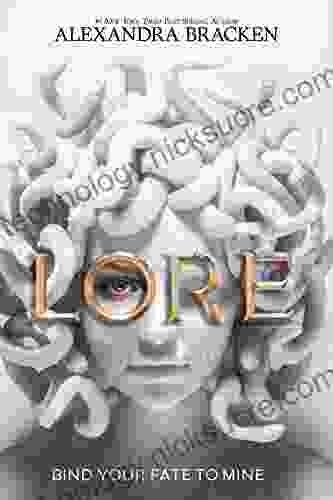
 Ernest Powell
Ernest PowellLore Alexandra Bracken: Unveiling the Mastermind Behind...
: In the vast expanse of contemporary...
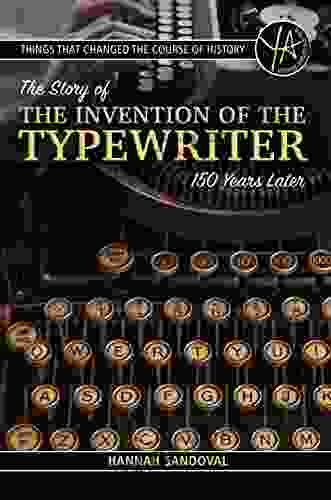
 T.S. Eliot
T.S. EliotThe Story of the Invention of the Typewriter: 150 Years...
The typewriter, a...
4.2 out of 5
| Language | : | English |
| File size | : | 1564 KB |
| Text-to-Speech | : | Enabled |
| Enhanced typesetting | : | Enabled |
| Word Wise | : | Enabled |
| Print length | : | 332 pages |
| Screen Reader | : | Supported |


